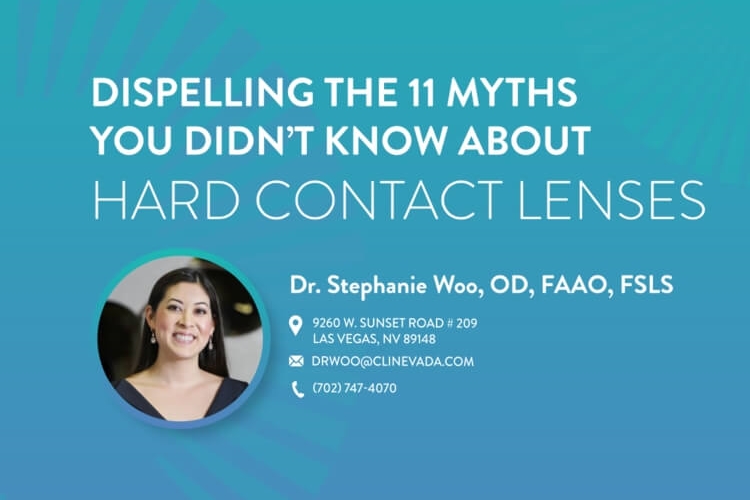A prosthetic contact lens is a painted or colored contact lens that can be a soft or hard lens. The purpose of the prosthetic contact lens is to cover the eye and improve the appearance of the eye following an injury or development of an eye condition. These contact lenses are not generally designed to improve the vision in the eye but are needed to improve the appearance of the eye and match the other eye. Conditions like corneal scars, iris abnormalities, and many others can lead to an eye that is visually deficient and has an abnormal appearance. In these cases, a prosthetic contact lens may be the best option to both reduce any asymmetry between the eyes and improve the overall cosmetics of the eyes.
Types of Prosthetic Contact Lenses
Any type of contact lens can be used as a prosthetic contact lens. This includes soft contact lenses, hard contact lenses, and scleral contact lenses.
Depending on the reason for needing the prosthetic contact lens, each type of lens may be beneficial in different situations.
Soft contact lenses can be painted and used as a prosthetic contact lenses in conditions that have a normal front surface of the eye but damage within the eye (such as iris abnormalities).
Hard contact lenses are often used when there is a small amount of abnormality in the shape of the front of the eye. These lenses can be painted or completely opaque.
Scleral contact lenses are much larger than either the soft or hard contact lenses and will vault over the front of the eye to mask any large abnormalities. These types of lenses are frequently painted and used as a prosthetic contact lenses in cases where the cornea is severely damaged or has been removed.
Dr. Woo's Thoughts on Edge Lift and Scleral Lenses
Edge lift with scleral lenses can be hard to see.
Even after seeing thousands of scleral lens patients, it is still difficult for me to spot it sometimes. Edge lift occurs when the edge of the scleral lens is too flat, resulting in the edge lifting off the eye.
An analogy would be like putting a paper plate onto a basketball. The edge of the plate will lift off because the shape does not match the contours of the basketball. In this video, you can see that there is a small shadow at the edge of the scleral lens in the temporal area.
This very small shadow is hard to identify, but we were lucky to catch it today. With the OCT image, you can see the edge of the lens is slightly lifted off of the conjunctiva, which was resulting in the shadow that we see in the slit lamp.
When edge lift is present, patients often complain that their lens is uncomfortable. If the edge lift is excessive you will see the lens actually move when they blink and the patient will state discomfort. You might also see a bubble come into the lens if the edge lift is severe enough.
Luckily, edge lift is very easy to fix. By simple steeping the edge in the affected area, you can resolve this issue.
Contact the lab to help, they will know what to do!
Benefits of Prosthetic Contact lenses
A prosthetic contact lens has the major benefit of improving the outward appearance of an eye that may appear damaged or distorted.
However, beyond cosmetic improvements, prosthetic contact lenses can also be used to limit the amount of light that reaches an eye that cannot see well. This can be beneficial if the poor-seeing eye has pain from light, is causing glare or distorted vision, or is causing double vision.
Prosthetic contact lenses can also help maintain the health of the front of the eye if the eye has been damaged.
If the cornea is damaged and unable to regulate itself or if the tear system is not functioning, a prosthetic contact lens can be used to maintain a stable tear film and the health of the front of the eye.
Fitting a Prosthetic Contact Lens
A prosthetic contact lens will require a special fitting and will need to be customized for each individual.
Because these lenses can be customized, it may take longer to fit and for the lens to arrive after ordering.
Usually, your eye doctor will be able to fit you with a prosthetic contact lens or will refer you to a doctor who specializes in contact lens fittings.


